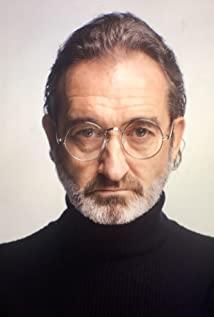Saw the screening yesterday and it was great.
When I get older, I like realistic movies, so the image of Xu Zheng, a fat middle-aged diaosi in Shanghai alleys, looks very pleasing to the eye, much more pleasing to the eye than his embarrassing stuff. The film pays special attention to details, the car inspection signs in 2002, the buildings in the photos of the Bund, the clothes and hairstyles of passers-by, the styles of everyone's mobile phones, the news and article formats in Baidu snapshots (although I can see the web pages in the blink of an eye). The address bar is C:\\Documents and settings...) are very conscientious and very realistic. The important background of the film is about the Swiss Novartis Gleevec drug for the treatment of chronic myeloid leukemia. Novartis' patented drug sells for as high as 2w+ per bottle, while the Indian generic drug costs less than one-tenth of the price. Therefore, ordinary patient families in China naturally There is a demand for purchasing agents. The joys and sorrows of all kinds of ordinary little people in the movie are very touching. After all, there is nothing wrong with living. The spoiler is here, every actor played very well, Wang Chuanjun, Zhou Yiwei, and Zhang Yu who inexplicably resembled Xiao Jingteng. Regarding drug research and development, patents, compulsory licenses and generic drugs can be expanded a lot, so that after I turned off the computer at 10 o'clock and lay down, I couldn't help getting up to check the data and tossing it to 12 o'clock. After sorting out the following content, most of the data came from wiki and Baidu. My profession is patent related, so there are a few patent parts involved, still very sketchy.
1. About Gleevec
The patent priority document for the original drug of Imatinib was applied in Switzerland in April 1992, and subsequently applied for EP and US patents, US5521184.
In 1997, a patent application was further made for the β crystal of its mesylate, which is the actual form of the commercial Gleevec, and the human oral absorption rate is better. WO9903854.
The US5521184 patent only applies for Imatinib and related compounds, while the 1997 patent further defines the application of the β crystal of the mesylate of Imatinib as a drug.
2. The Indian Patent, Compulsory Licensing and Gleevec lawsuits
India's Patent Law of 1970 is the first patent law after its independence. It recognizes product and method patents, but does not grant patents for pharmaceuticals, food and agricultural chemicals, but only for their manufacturing methods. While protecting intellectual property rights, it prevents the monopoly of imported patented products on domestic public necessities.
After India joined the WTO in 1994, in order to meet the requirements of TRIPS (Trade-Related Aspects of Intellectual Property Rights), three categories of products such as pharmaceuticals, agricultural chemicals, and food must be patented. Year to implement. During the transition period from 1999 to 2005, the above-mentioned three types of patents were received by the mailbox system, and were formally accepted in 2005.
The 2002 amendment extended the term of patent protection to 20 years, and stipulated that countries could implement compulsory licenses on patents for reasons of public interest, national security, Indian heritage, and public health.
(Compulsory licensing means that under certain circumstances, the state authorizes a third party to use the technology protected by the patent without the permission of the patentee, including production, sales, import of related patented products, etc. At the same time, The licensor needs to pay a certain royalty to the patentee).
In the 2005 amendment to the Indian Patent Law, a new section 92A(1) was added on the scope of application of compulsory licensing, which enables Indian generic drugs under compulsory licensing to be exported to regions and countries without relevant production capacity. This provision is a great encouragement for domestic generic drug companies to apply for compulsory licenses.
The patent for Novartis's original drug Imatinib was granted in 1993 shortly after it was accepted by the Indian Office. According to the TRIPS Treaty, Novartis applied for market exclusivity of Gleevec and obtained a license in 2003.
(US5521184A has a total of 39 patents in various countries, but I really don't see any in India, what's the situation?)
When the Gleevec commodity patent (WO9903854) was filed in India in 1998, just in time for the transition period, it stayed in the mailbox system until 2005, when the Indian Bureau began to review it, during which it was protested by local generic drug manufacturers and some organizations . The Indian Patent Law, which came into effect in 2005, provides patent protection only for new drugs invented after 1995 or drugs that can greatly improve the efficacy after improvement, and does not support the patent of original drug mixture or derivative drugs. Therefore, the patent application for the beta crystal of imatinib mesylate was rejected by the Office of India. Novartis appealed several times. In 2013, the Indian High Court upheld the original judgment and rejected Novartis' patent application for Gleevec because Gleevec was still a derivative of the 1993 Imatinib API.
(CN1264375A, the same family of WO9903854 in China, was applied for on July 16, 1998, authorized in 2004, and valid for 16 days).
3. About the movie prototype (with spoilers).
The background of the movie is set in 2002-2003. The protagonist is Cheng Yong. He used to be an Indian god oil seller. After purchasing the Indian imitation Gleevec and earning the first pot of gold, he opened a textile factory because he was worried that he would go to jail and wash his hands. He couldn't afford Gleevec to commit suicide, he was touched, and he went bankrupt to help domestic leukemia friends to buy Indian imitation Gleevec.
The prototype is Lu Yong, who is in the textile business. Chronic myeloid leukemia was detected in 2002. At that time, Novartis' Gleevec had just entered the domestic market. The price of a bottle of medicine was about 27,000 per month, and ordinary families could not afford it.
In 2004, Lu Yong had no intention of knowing that a bottle of Gleevec, which was imitated in India, cost only about 3,000. After he tried it, he found that the indicators were not much different from those of Novartis, and shared it in the patient group. In the following years, everyone helped each other and purchased Gleevec generic drugs made in India by mail and purchasing agents, and the QQ group of patients became more and more strong. However, due to the cumbersome regulations in India, cross-border remittances cannot be made too many times a year, so the account opening address and account number need to be changed frequently, and it is very troublesome to purchase medicines. And because Lu Yong often helped to contact him, the Indian generic drug manufacturer contacted Lu Yong and asked him to provide a domestic bank account for depositing funds for the company to sell drugs in China. As more and more cross-border purchasing agents were investigated, patients were reluctant to provide bank account numbers. In 2013, Lu Yong could not find patients willing to provide bank card numbers, so he purchased ID information and bank cards from Taobao. The sales gang was arrested, and Lu Yong was also involved in the investigation. He was detained and sent to the detention center on suspicion of obstructing the management of credit cards.
On July 22, 2014, Yuanjiang City Procuratorate prosecuted Lu Yong for "obstructing credit card management" and "selling counterfeit medicines".
Nearly 1,000 leukemia patients jointly wrote a letter, asking the judicial authorities to exempt Lu Yong from criminal punishment. On January 27, 2015, Yuanjiang City People's Procuratorate withdrew the prosecution to Yuanjiang City People's Court.
Since 2013, Gleevec has been included in Jiangsu Medical Insurance, which can reimburse 1.7W+ per month, and the actual cost is about 3,000 yuan. Lu Yong said that he is still taking imitation Gleevec made in India, and a bottle costs about 200 yuan.
Discussing this with my colleagues. In 2014, Lu Yong was indicted on charges of "obstructing credit card management" and "selling counterfeit drugs", but he was not charged with patent infringement, because according to the provisions of the Patent Law, no patent rights were granted. A person's permission to implement his patent is to infringe the patent right. Implementation herein includes manufacture, use, offering for sale, sale, import, and the like. Although the industry has been talking about strengthening the enforcement of patent protection, it is only the beginning.
my country's Patent Law also provides for compulsory licenses, Article 50: For the purpose of public health, the patent administration department of the State Council may authorize the manufacture and export of medicines for which patent rights have been obtained and export them to countries that comply with the provisions of the relevant international treaties to which the People's Republic of China is a party. Or the compulsory license of the region. But since 1984, there has never been a single compulsory license.
It is also understandable from the fact that the research and development of new drugs is really very expensive, and the profits obtained after the drugs are launched can be further used as scientific research funds to start the next round of research and development. If there is not enough interest, no pharmaceutical company is willing to develop new drugs. The truth is very noble and righteous, but when there are relatives and friends who are really sick and need medicine, no amount of legal principles are powerless. This should not be a matter of choosing one or the other.
View more about Dying to Survive reviews











